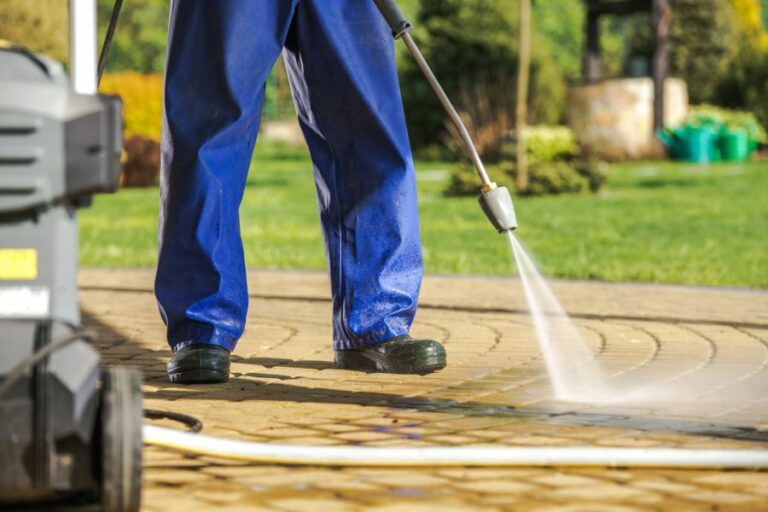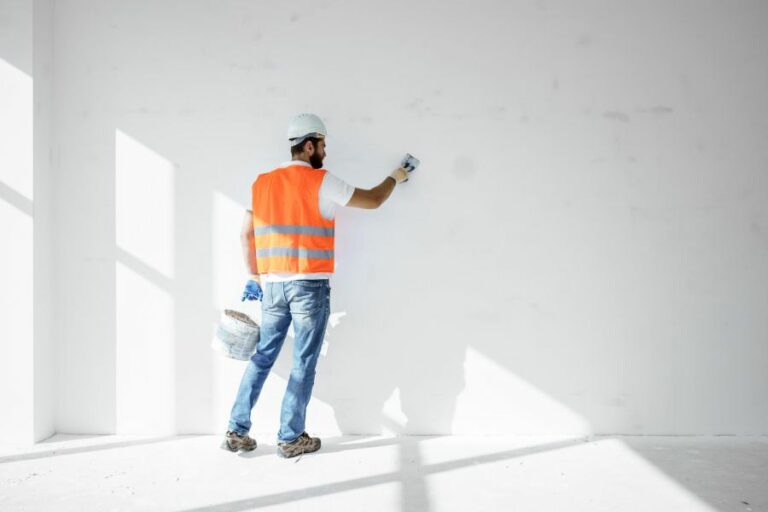Heritage Preservation Tackling Surface Damage, What Pros Say
Heritage preservation is crucial to maintaining the cultural, historical, and architectural significance of structures and monuments worldwide. One of the most pressing issues in this field is tackling surface damage that arises from various factors, such as environmental conditions, human intervention, and natural processes.
Heritage preservation: tackling surface damage:
Heritage preservation tackles surface damage through preventive conservation, appropriate cleaning techniques, and protective measures. Preventive strategies include regular monitoring and environmental and biological control, while cleaning involves selecting suitable dry or wet methods based on the material and soiling. Repair, consolidation, and application of protective coatings further improve building longevity and reduce maintenance efforts.

Discover how experts combat surface damage to preserve our precious heritage! Dive into innovative techniques and new materials introduced to protect and restore historical monuments, ensuring their beauty lasts for future generations. There’s more to uncover, so read on!
Contents
- 1 Addressing Surface Deterioration in Heritage Conservation
- 2 Exploring Techniques for Safeguarding Cultural Heritage
- 3 Seven Intervention Levels in Cultural Site Conservation
- 4 The Drive to Shield Historic Districts from Urban Expansion
- 5 The Significance of Safeguarding Historical Landmarks
Addressing Surface Deterioration in Heritage Conservation
• Understanding Surface Damage
Heritage buildings and monuments are constantly exposed to natural aging processes and environmental factors that cause deterioration.
Surface damage is a common consequence that affects the appearance, structure, and stability of these valuable assets, demanding urgent attention to preserve their historical significance.
Surface damage can manifest in various forms, including flaking, scaling, blistering, cracking, and staining of the building materials. Among external factors, weathering, pollution, and biological agents (such as mold, algae, and lichens) are the main culprits contributing to the deterioration of heritage structures.
• Strategies for Preventive Conservation
Preventive conservation is an essential component of heritage preservation, focusing on minimizing the risks and mitigating the potential damages before they become critical. The following are some strategies that can help accomplish this objective:
– Regular Monitoring and Maintenance
Frequent inspection of the building envelope and interiors is crucial for early detection of surface damage. Routine maintenance tasks, such as cleaning, repair, and coating, can be performed to prevent further deterioration.
Additionally, the use of appropriate materials and techniques that are compatible with the original construction can ensure long-term preservation.
– Environmental Control
Reducing exposure to harmful environmental factors can significantly decrease the risk of surface damage. Some measures include:
- Installing drainage systems to prevent water infiltration
- Controlling humidity levels with ventilation, dehumidifiers, or air conditioning
- Using protective barriers or coatings to shield the surfaces from pollutants and chemical agents
– Biological Control
Effective management of biological agents, such as fungi, insects, and rodents, is essential to avoid detrimental attacks that can weaken the structural integrity of heritage buildings.
Regular cleaning, pest control measures, and monitoring of surrounding vegetation can help maintain a healthy built environment.
• Appropriate Surface Cleaning Techniques
Cleaning is important for the aesthetic and functional preservation of heritage structures. However, improper cleaning methods can often cause irreversible damage. Therefore, it is crucial to select an appropriate technique based on the building material, condition, and type of soiling.
– Dry Cleaning Methods
Dry cleaning methods are less invasive and suitable for materials sensitive to water or chemical agents. Some techniques include:
- Soft brushing to remove loose dust and dirt
- Air abrasive techniques, such as micro-sandblasting for the controlled removal of soiling and coatings
- Laser cleaning to remove surface contaminants without physical contact
– Wet Cleaning Methods
Wet cleaning methods involve the use of water, sometimes with mild detergents or solvents. These methods work well with materials that are resilient to moisture and require deeper cleaning. Techniques include:
- Low-pressure water washing to remove dirt and biological growth
- Poulticing or clay masks to draw out deep-seated stains and salts
- Chemical cleaning with pH-neutral or slightly alkaline solutions to dissolve stubborn contaminants and deposits
• Repair and Consolidation
Once the surfaces are clean, repair and consolidation efforts can begin. These processes involve restoring the original material or introducing compatible substitutes to strengthen and stabilize the structure. Methods include:
– Filling Cracks and Voids
Cracks and voids in the surface can be filled with mortars, grouts, or injectable resins that match the original composition, color, and texture of the surrounding materials. Attention must be given to ensure proper curing and drying conditions.
– Reattachment and Reintegration
Loose or detached elements, such as fragments and ornaments, can be reattached using suitable adhesives or mechanical fixings. In some cases, the replacement of missing or severely damaged components might be necessary to restore aesthetic and functional integrity.
– Consolidation Treatments
Consolidation treatments, such as using consolidants, reinforce weak or friable materials by impregnating and binding their structure.
However, it is crucial to carefully select and test the consolidants to avoid undesired side effects, such as discoloration, stiffness, or incompatibility with the original material.
• Protective Measures and Coatings
After the surface restoration is complete, protective measures and coatings can be applied to prolong the lifespan of the building materials and reduce future maintenance efforts. These include:
– Water Repellents
Water repellents can be used to minimize water absorption and penetration into porous materials, thereby reducing the risk of freeze-thaw cycles, salt crystallization, and biological growth.
Silane or siloxane-based products are preferred for their ability to maintain the natural appearance and breathability of the materials.
– Anti-Graffiti Coatings
Anti-graffiti coatings create a barrier on the surface, making it difficult for paints, markers, or adhesives to bond and facilitate graffiti removal without causing damage.
These coatings can be temporary (easily removable) or permanent (durable and resistant) depending on the specific needs of the building.
– Sacrificial Layers
Sacrificial layers, such as lime wash or breathable paints, can be applied to protect surfaces from environmental factors and weathering.
These coatings gradually wear away, requiring periodic renewal but providing effective protection for the underlying materials during their lifespan.
• Final Recommendations
Heritage preservation is a complex and delicate task that requires the selection of appropriate methods and materials to tackle surface damage effectively.
A thorough understanding of the building materials, craftsmanship, and history, combined with the expertise of conservators and specialists, can ensure successful and sustainable heritage conservation efforts.
Exploring Techniques for Safeguarding Cultural Heritage
Heritage preservation is a crucial aspect of protecting and maintaining our shared past. By conserving the physical, tangible remnants of history, we honor the memory of previous generations and leave a legacy for those who will follow us.
• Documentation and Inventories
One of the primary methods for heritage preservation is accurate documentation.
By creating comprehensive inventories of the existing cultural heritage sites, artifacts, and assets, we can ensure that all relevant information is readily available to researchers, policymakers, and other stakeholders involved in the preservation process.
These records allow for proper monitoring and management of these resources.
– Recommendations
- Keep accurate, up-to-date records of cultural heritage assets
- Implement standardized methods for inventory management
- Utilize digital record-keeping for better accessibility and collaboration
• Laws and Regulations
Effective legal frameworks are vital in supporting heritage preservation efforts at the national, regional, and local levels. Governments can enact legislation that promotes conservation practices, sets guidelines, and penalizes non-compliance.
– Recommendations
- Establish clear legal frameworks to protect cultural heritage assets
- Encourage collaborative efforts between various government departments
- Implement stringent penalties for non-compliance
• Preservation Techniques
There are numerous preservation techniques available, ranging from simple maintenance practices to complex technological applications. Here are some of the most common methods employed in heritage preservation:
– Preventive Conservation
Preventive conservation focuses on minimizing the risk of deterioration of cultural heritage assets. This approach typically involves regular maintenance, environmental control, and proper storage and handling procedures.
– Recommendations
- Develop regular maintenance schedules for heritage sites
- Monitor environmental conditions to mitigate potential damage
- Educate staff and visitors on proper handling techniques
– Restoration and Rehabilitation
When a cultural heritage asset has suffered damage or degradation, restoration, and rehabilitation come into play. In this method, experts restore the site or object to its original appearance or a specific historical period, ensuring that its authenticity and significance are not compromised.
– Recommendations
- Assess the severity of damage and degradation before undertaking restoration
- Use traditional materials and techniques when possible
- Consult with experts in the field and follow established guidelines
– Adaptive Reuse
Sometimes, it might become necessary to modify a cultural heritage asset to ensure its continued viability. Adaptive reuse refers to the process of repurposing these sites for new, modern functions.
This approach can often be an effective way of ensuring the sustainability of a heritage site while maintaining its historic integrity.
– Recommendations
- Consider the long-term impact of adaptive reuse on the site’s heritage value
- Involve local communities in decision-making processes
- Maintain the architectural and historic character of the site
• Public Awareness and Participation
Engaging the public in heritage preservation efforts is a highly effective way of fostering a shared sense of responsibility and appreciation for these invaluable assets.
By informing and educating communities about the importance of cultural heritage, we can inspire collective action to preserve and protect our shared history.
– Recommendations
- Implement public outreach programs and educational initiatives
- Collaborate with schools and community organizations
- Involve local communities in preservation efforts through volunteering and local engagement
• International Cooperation
Given the global nature of cultural heritage, international cooperation plays a vital role in its preservation. Cross-border collaboration enables the exchange of knowledge, technology, and best practices, ultimately leading to more effective preservation efforts.
– Recommendations
- Promote international cooperation through joint initiatives and partnerships
- Contribute to global knowledge sharing by participating in conferences, workshops, and seminars
- Encourage collaboration between professionals in different countries, as well as with international organizations
• Conclusion
Heritage preservation is an ongoing and multifaceted endeavor that demands the involvement of many stakeholders, from government bodies to local communities.
By employing a combination of legal frameworks, preservation techniques, public awareness campaigns, and international cooperation, we can ensure the continued conservation and appreciation of our shared cultural heritage for generations to come.
Method | Description |
|---|---|
Conservation | Conservation refers to the actions taken to preserve cultural heritage sites and objects, including protecting them from damage, deterioration, or destruction. |
Restoration | Restoration involves the process of repairing or returning a heritage site or object to its original state or appearance by removing accumulated dirt, paint, or other materials, and making necessary structural repairs. |
Rehabilitation | Rehabilitation is the process of adapting a historic building or site for a new or changed use, while retaining its significant features and heritage values. |
Reconstruction | Reconstruction is the process of rebuilding a heritage structure or site that has been damaged or destroyed, using original materials and techniques as much as possible to reproduce its historical appearance. |
Adaptive Reuse | Adaptive reuse refers to the process of reusing a historic building or site for a new purpose, while preserving its heritage values and character-defining elements. |
Relocation | Relocation involves moving a historic building or object to a new site, typically as a last resort when its original site is threatened or unsuitable for continued preservation. |
Documentation and Research | Documentation and research are important aspects of heritage preservation, involving the collection and interpretation of data, historical records, and other materials to better understand and share the story of a site or object. |
Preservation Planning | Preservation planning is a systematic approach to identifying, evaluating, and prioritizing heritage resources, and determining appropriate actions and policies to ensure their long-term preservation and sustainability. |
Seven Intervention Levels in Cultural Site Conservation
Conservation and the preservation of biodiversity play a crucial role in maintaining the health and stability of our environment.
As human activity increasingly impacts ecosystems around the world, it becomes more necessary to implement various conservation management strategies. In this context, understanding the concept of the seven degrees of intervention in conservation is particularly essential.
• Degree 1: Species Monitoring
The first degree of intervention in conservation focuses on monitoring species populations, distribution, and habitat requirements, as well as any threats they may face.
Through systematic data collection and analysis, it becomes possible to formulate effective conservation strategies and prioritize species for conservation efforts.
– Recommendation: Establish and Support Monitoring Programs
Implementing and supporting long-term species monitoring programs allows us to track changes in populations and habitats, enabling adaptive management approaches that effectively address emerging threats and challenges.
• Degree 2: Habitat Management
Habitat management plays a vital role in addressing the underlying causes of species decline, such as habitat degradation or loss. To this degree, conservationists work towards maintaining, restoring, or creating habitats that support the survival of target species or ecosystems.
– Recommendation: Prioritize Habitat Conservation and Restoration
By identifying and addressing the key drivers of habitat degradation or loss in a given area, it becomes possible to prevent species declines and maintain ecological integrity.
• Degree 3: Species Management
Species management refers to conservation actions directly targeting the species of concern, such as population supplementation, translocations, and reintroductions.
These measures can be vital for ensuring the long-term survival of species that have become critically endangered or face imminent extinction.
– Recommendation: Implement Species Management Interventions When Necessary
While species management can be resource-intensive, it is sometimes essential to support populations that have reached critically low levels. Conservationists must carefully assess existing threats and potential benefits before initiating such measures.
• Degree 4: Human-Wildlife Conflict Resolution
The human-wildlife conflict poses a significant challenge to conservation efforts, as it often leads to species decline and habitat degradation. To this degree, conservationists work towards identifying, understanding, and addressing the sources of conflict between humans and wildlife.
– Recommendation: Involve Local Communities in Conflict Resolution
Effective human-wildlife conflict resolution strategies require the involvement and cooperation of local communities that are directly impacted by the conflict. Tailoring interventions to specific contexts can help ensure the long-term success of conservation efforts.
• Degree 5: Policy and Legislation
Conservation efforts and management strategies must be supported by policy and legislation that creates an enabling environment for conservation interventions.
To this degree, conservationists advocate for the strengthening or creation of policies and regulations that protect species or habitats, as well as promote sustainable resource use.
– Recommendation: Collaborate with Policymakers and Stakeholders
Working with policymakers and stakeholders is essential to ensure new policies and legislation are practical, effective, and can be implemented successfully.
• Degree 6: Community-Based Conservation
Community-based conservation involves engaging local communities in the management and protection of their natural resources. This approach recognizes that the long-term success of conservation efforts often depends on the support, cooperation, and active participation of local people.
– Recommendation: Develop and Support Community-Based Conservation Initiatives
By involving communities in conservation initiatives, promoting the sustainable use of resources, and acknowledging the value of traditional knowledge and practices, successful long-term conservation outcomes can be achieved.
• Degree 7: International Cooperation
The conservation of many species and ecosystems requires international cooperation, particularly when faced with transboundary threats or the protection of migratory species.
To this degree, conservation efforts focus on fostering collaboration between countries and organizations to address global conservation challenges.
– Recommendation: Promote and Strengthen International Conservation Partnerships
Developing strong partnerships and collaborations across borders is vital to ensuring the effectiveness of conservation efforts by sharing resources and expertise and coordinating actions to safeguard our global biodiversity.
In conclusion, an understanding of the seven degrees of intervention in conservation is critical for developing appropriate and effective strategies to protect species and ecosystems.
By identifying the most relevant degree or combination of degrees for a given context, conservationists can optimize their efforts to preserve our planet’s rich biodiversity, ensuring a healthy and sustainable environment for current and future generations.
Degree | Intervention Levels in Cultural Site Conservation |
|---|---|
1 | Monitoring |
2 | Education and Communication |
3 | In-situ Conservation |
4 | Ex-situ Conservation |
5 | Restoration |
6 | Reintroduction |
7 | Assisted Migration |
The Drive to Shield Historic Districts from Urban Expansion
• Understanding the Goals of Preservationists
Historic preservationists are individuals who strongly advocate for the protection and conservation of historic sites, buildings, and landscapes. Preservationists work tirelessly to ensure that these unique and valuable resources are not lost to development and progress.
The primary goals of preservationists include preserving the key elements of our past, fostering a sense of place, promoting economic revitalization, and encouraging sustainable development practices.
• Preserving Our Cultural Heritage
One of the main reasons why preservationists want to protect historic areas from development is to preserve our cultural heritage. Historic sites and buildings serve as “time capsules,” preserving the stories, events, and experiences that have shaped our collective past.
These sites offer invaluable insights into the lives of the people who came before us and provided us with a tangible connection to history.
By protecting historic areas, preservationists help to ensure that the cultural heritage of a region is safeguarded for future generations to appreciate and understand.
Precious examples of architecture, craftsmanship, and design from various time periods are preserved, providing important educational resources for individuals of all ages.
• Fostering a Sense of Place and Identity
Another reason why preservationists are keen on protecting historic areas is to foster a sense of place and identity. Historic buildings and spaces often represent the unique character and identity of a community.
The distinctive architecture, layout, and landscape of these sites evoke a sense of continuity, heritage, and tradition. By preserving and maintaining these historic spaces, preservationists help to create a strong and cohesive sense of identity for residents and visitors alike.
In addition, historic preservation has the potential to enhance pride in a community, as residents often take great pride in their town or city’s unique heritage and history. This sense of pride can help to strengthen the community bond and foster a more engaged, connected, and resilient population.
• Promoting Economic Revitalization
Historic preservation has many economic benefits, which is another reason why preservationists strive to protect historic areas from development.
Restoring and reusing historic buildings can create new business opportunities, stimulate tourism, and generate jobs in industries such as construction, architecture, and design.
Moreover, preserving historic sites often contributes to increased property values and enhanced tax revenues for local communities. Historic districts tend to attract a diverse mix of businesses and industries, fostering economic vitality and innovation
• Encouraging Sustainable Development Practices
Protecting historic areas from development also aligns with the goals of sustainable development practices. The adaptive reuse of historic buildings is often a more environmentally responsible approach than demolishing existing structures and constructing new ones.
By utilizing existing buildings and infrastructure, preservationists help to support sustainable, environmentally responsible development practices that minimize waste, conserve energy, and reduce the overall ecological footprint of a community.
According to the Environmental Protection Agency, adaptive reuse of historic buildings can contribute significantly to resource conservation and waste reduction efforts.
• Conclusion
In summary, preservationists aim to protect historic areas from development for a variety of interrelated reasons, including preserving our cultural heritage, fostering a sense of place and identity, promoting economic revitalization, and encouraging sustainable development practices.
By working to safeguard these valuable resources, preservationists play a critical role in shaping the future of communities across the globe.
Their unwavering commitment to the protection and conservation of historic sites enriches our understanding of the past, enhances our quality of life, and ensures a vibrant, sustainable future for generations to come.
The Significance of Safeguarding Historical Landmarks
• The Connection to Our Past
– The Value of History
Preserving historical sites allows us to maintain a strong connection to our past. These sites are tangible evidence of the events, cultures, and civilizations that came before us. By conserving these sites, we ensure that future generations can learn from and appreciate the rich history that they embody.
One example of the importance of historical sites is the Acropolis of Athens, a symbol of ancient Greek civilization and democracy.
Designated as a UNESCO World Heritage site, it serves as a living testament to the achievements of ancient Greeks and inspires people from all over the world.
– A Sense of Identity and Place
Historical sites provide a sense of identity and place for communities and individuals. They tell the story of how a particular group of people, or society, lived and evolved over the years.
By preserving these sites, we can strengthen the collective identity and cultural understanding within nations, cities, and local communities.
The preservation of historical sites like the Tuskegee Institute in the United States helps emphasize the importance of recognizing and honoring the contributions of African Americans to American history.
• Economic Benefits
– Tourism and Job Creation
The preservation of historical sites contributes significantly to local economies through tourism. These sites draw tourists from all corners of the world, generating revenue for the local community.
These visitors spend money at local businesses, such as hotels, restaurants, and shops, creating a positive economic impact.
Moreover, the conservation of historical sites often requires specialized knowledge and skills, resulting in various job opportunities for historians, architects, and tourism professionals.
– Property Value and Urban Revitalization
Preserving historical sites can also contribute to the growth of property value in surrounding areas. Well-maintained historical sites can enhance the aesthetic quality of a neighborhood, making it a more desirable place to live and invest in.
In numerous urban areas, the revitalization of historical sites has breathed new life into struggling communities, leading to the establishment of new businesses, cultural institutions, and public spaces.
The revitalization and adaptive reuse of New York City’s High Line is an excellent example of how a once-abandoned railroad infrastructure has transformed into a popular public park and contributed to the city’s economy.
• Educational Opportunities
– Field-based Learning
Historical sites provide unique educational opportunities that cannot be replicated in a classroom setting. Teachers and students alike can use these sites as supplementary resources for lessons on history, art, and architecture.
Students can witness firsthand the physical remnants of important historical events, deepening their understanding of the past.
The Colonial Williamsburg site in Virginia, for example, offers educational programs that immerse students in the daily life of colonial America and the events leading up to the American Revolution.
– Interdisciplinary Collaboration
The preservation of historical sites often requires the collaboration of professionals from various disciplines.
This interdisciplinary approach fosters the development of new knowledge, methodologies, and technologies in areas such as archaeology, architecture, history, and material science.
• Environmental Sustainability
– Adaptive Reuse
One of the key principles of historic preservation is adaptive reuse. Instead of demolishing old structures to make way for new construction, adaptive reuse involves repurposing existing buildings for different uses while retaining their historic character.
Adaptive reuse reduces the amount of waste sent to landfills by preserving a building’s existing materials and reduces the consumption of new construction resources such as energy and raw materials.
A notable example of adaptive reuse is the St. Pancras Renaissance Hotel in London. Once a derelict Victorian train station, it has been transformed into a luxury hotel while retaining its original architectural features.
– Green Spaces
Historical sites, especially those that include landscapes or gardens, provide important green spaces that contribute to the overall health and well-being of a community. These sites can serve as recreational areas and wildlife habitats, cleanse air and water, and mitigate the urban heat island effect.
• In Conclusion
The preservation of historical sites is essential for numerous reasons. These sites provide vital connections to our past, offer educational opportunities, and foster a sense of identity.
Additionally, preserving historical sites contributes significantly to the local economy, promotes environmental sustainability, and strengthens cultural understanding in our constantly evolving global society.
As individuals, we can support the preservation of historical sites by visiting and learning about them, advocating for their protection, and volunteering our time and skills to organizations dedicated to this mission.
By working together, we can ensure that these invaluable resources endure for the benefit of future generations.







